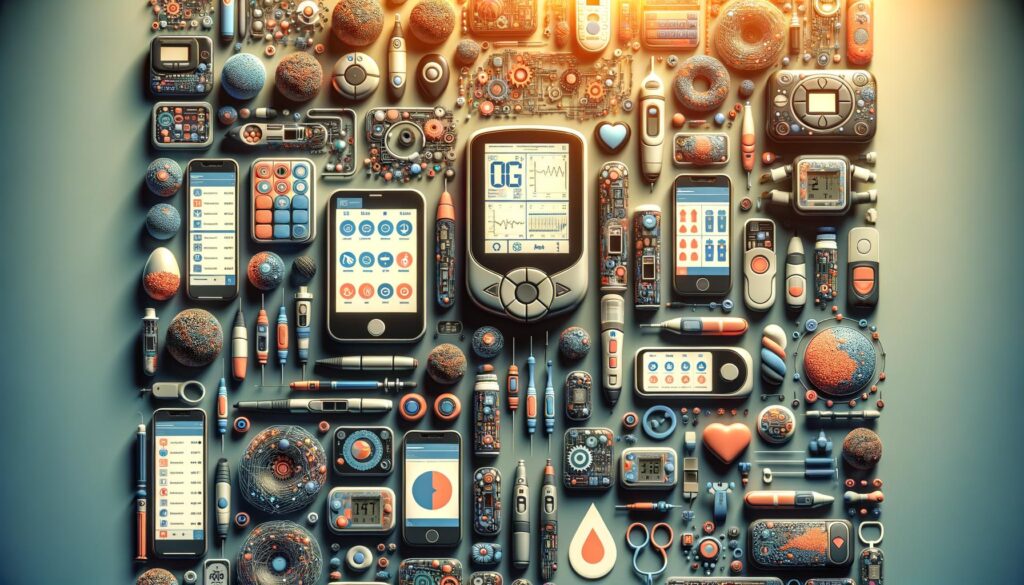Exploring Continuous Glucose Monitoring Devices

Understanding Continuous Glucose Monitoring
Continuous glucose monitoring (CGM) devices have emerged as a significant technological advancement in managing diabetes, a chronic condition that requires constant monitoring and regulation of blood sugar levels. Unlike traditional finger-prick blood tests, CGMs provide a comprehensive, real-time overview of glucose variations throughout the day and night. This technology is a game-changer for many, as it enables enhanced glucose control by alerting users to highs and lows before symptoms occur. These devices consist of a sensor placed under the skin, which measures glucose levels, and a transmitter that sends the data to a display device.
The Components of CGM Systems
CGM systems are made up of several components that work collectively to provide continuous data on glucose levels. These include:
- Sensor: A small sensor that is inserted under the skin to measure glucose levels in the interstitial fluid, providing readings every few minutes.
- Transmitter: This component wirelessly sends the glucose data from the sensor to a receiver or smart device, allowing for immediate viewing.
- Receiver/Display Device: This could be a stand-alone device or a smart device app where users view their glucose data. The receiver displays real-time glucose levels, trends, and alerts.
Together, these components offer a comprehensive monitoring solution, enabling users to make informed decisions regarding diet, exercise, and medication.
Benefits of Continuous Glucose Monitoring
The benefits of CGMs extend beyond just monitoring glucose levels. They offer many advantages that can improve the quality of life for individuals with diabetes:
- Improved Glycemic Control: By offering detailed trends and patterns, users can better understand how food, activity, and medications affect their glucose levels, leading to more effective management.
- Reduced Finger-Prick Testing: Although it might be recommended occasionally to calibrate the device, CGMs significantly reduce the need for frequent fingerstick tests.
- Emergency Alerts: Many CGMs provide alerts for rapid increases or drops in glucose levels, which can prevent emergencies related to hyperglycemia or hypoglycemia.
These benefits underscore why many healthcare providers are recommending CGM systems to their patients for effective diabetes management.
Challenges and Considerations with CGM Devices
While CGM devices provide numerous benefits, there are challenges and considerations to keep in mind:
- Cost: CGM systems can be expensive, though insurance may cover some or all of the costs depending on the policy and the individual’s health plan.
- Accuracy: While CGMs are generally accurate, they may require calibration and should be used in conjunction with occasional finger-stick tests to ensure precision.
- Skin Irritation: Some users may experience irritation at the site of the sensor, requiring them to find suitable skin adhesives or alternatives.
These challenges do not outweigh the benefits but are essential for potential users to consider and discuss with their healthcare providers when deciding on CGM usage.
The Future of Glucose Monitoring
The future of CGM devices is promising, with ongoing research and development aimed at enhancing their functionality and accessibility. Innovations may include:
- Wearable Technology Integration: Future devices may integrate seamlessly with wearable technology, allowing for even greater convenience and continuous health monitoring.
- Non-Invasive Monitoring: Research into non-invasive sensors, capable of measuring glucose without skin penetration, is a hopeful advancement that could revolutionize the experience of monitoring.
- Artificial Intelligence (AI): AI could lead to improved predictive algorithms, offering users personalized health insights and recommendations based on their glucose data patterns.
These potential advancements signify a future where glucose monitoring is more efficient, less intrusive, and more accessible to a broader range of users.
Conclusion
Continuous glucose monitoring devices represent a significant step forward in diabetes management, offering real-time data and insights that empower users to maintain better control of their glucose levels. By understanding how CGM systems work, recognizing their benefits, and acknowledging potential challenges, users can make informed decisions about their diabetes care. As research and technology evolve, the potential for improved devices and innovations continues, promising enhanced management solutions for people with diabetes and possibly changing the standard of care in the near future.
